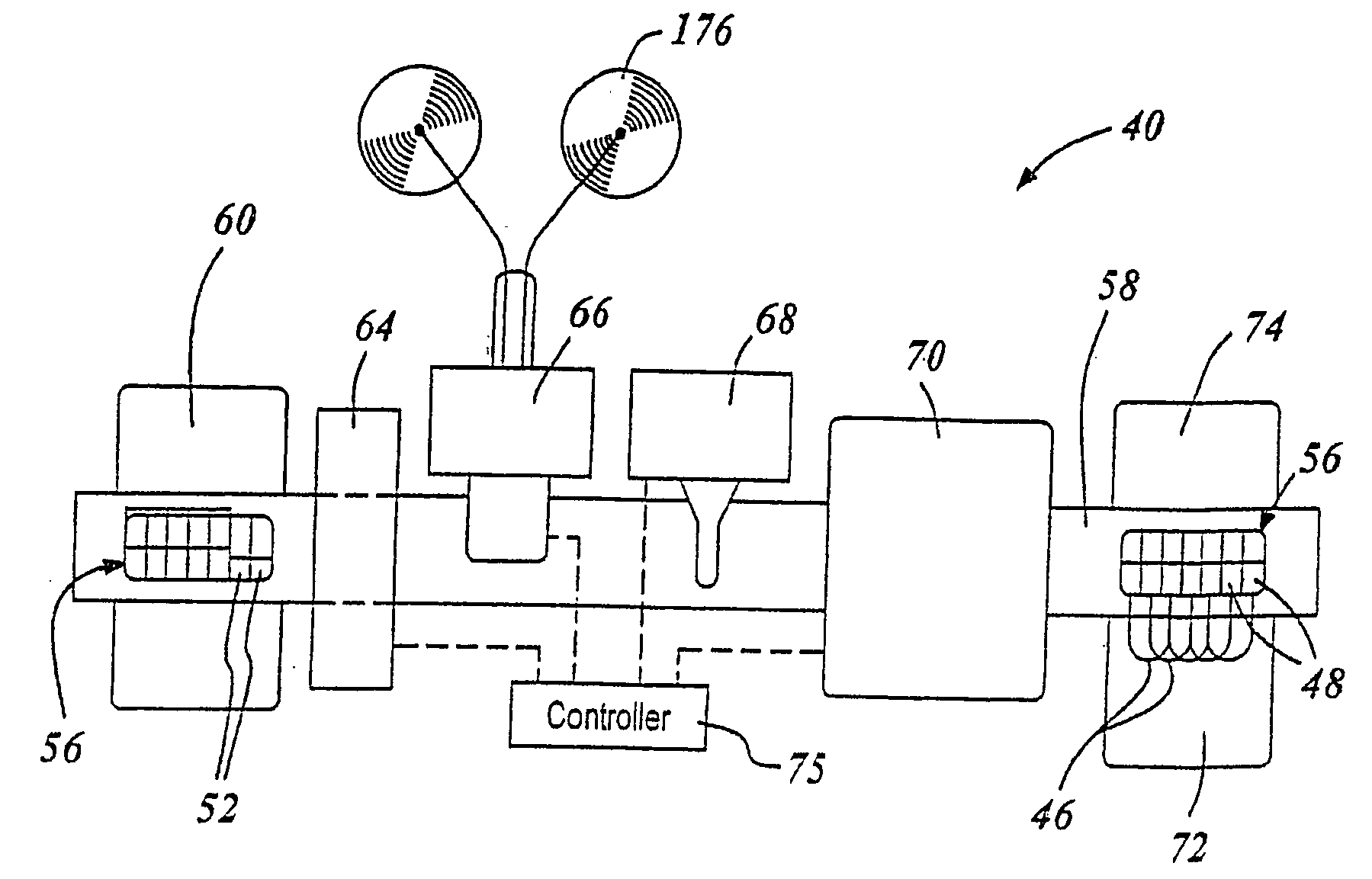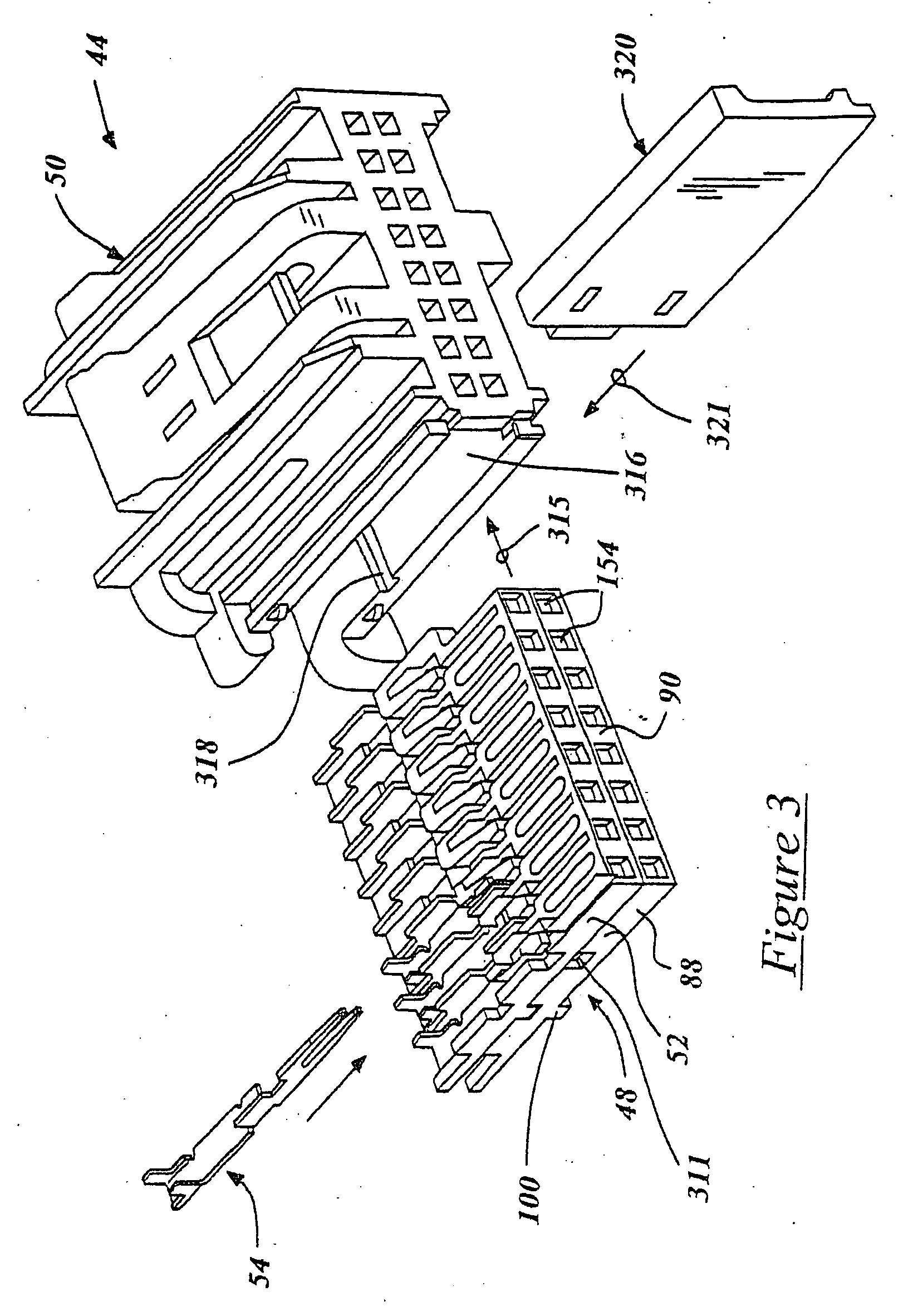Wire loader
a wire loader and loader technology, applied in the direction of insulated conductors, coupling device connections, cables, etc., can solve the problems of high manufacturing cost, time-consuming manual intervention during the manufacturing process, and affecting the overall quality of the wire harness
- Summary
- Abstract
- Description
- Claims
- Application Information
AI Technical Summary
Benefits of technology
Problems solved by technology
Method used
Image
Examples
Embodiment Construction
[0055] Referring to FIGS. 1-3, an automated wire harness manufacturing machine 40 of the present invention produces a novel wire harness 42, as best illustrated in FIG. 2. The wire harness 42 has a plurality of connectors 44 which are interconnected electrically to one another by a series of bundled electrically insulated wires 46. Each connector 44 has plurality of wafer assemblies 48 which are stacked and indexed to one-another within a connector housing 50. An electrical insulating wafer 52 of each wafer assembly 48 houses and locks to a plurality of terminals 54 which are spaced apart and aligned side-by-side to one another via the wafer. The wafers 52 have electrically insulating properties and are preferably made of injection molded plastic. Generally, one end of at least one insulated wire 46 is terminated to a respective terminal 54 of the wafer assembly 48 of a particular connector 44, and the other end of the same wire is engaged to another wafer assembly of a different co...
PUM
| Property | Measurement | Unit |
|---|---|---|
| pressure | aaaaa | aaaaa |
| frequency | aaaaa | aaaaa |
| height | aaaaa | aaaaa |
Abstract
Description
Claims
Application Information
 Login to View More
Login to View More - R&D
- Intellectual Property
- Life Sciences
- Materials
- Tech Scout
- Unparalleled Data Quality
- Higher Quality Content
- 60% Fewer Hallucinations
Browse by: Latest US Patents, China's latest patents, Technical Efficacy Thesaurus, Application Domain, Technology Topic, Popular Technical Reports.
© 2025 PatSnap. All rights reserved.Legal|Privacy policy|Modern Slavery Act Transparency Statement|Sitemap|About US| Contact US: help@patsnap.com



